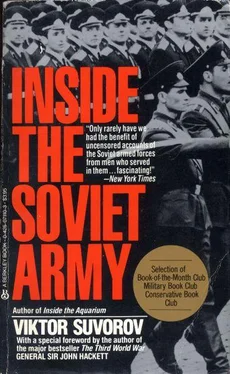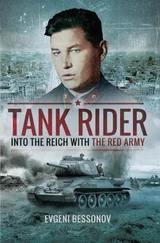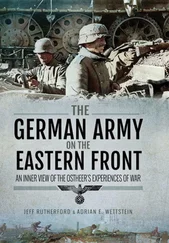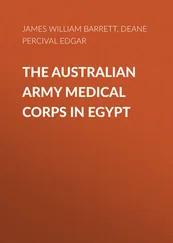While the national defence system is static, those of the different armed services are mobile, designed to move alongside the forces which they exist to protect. If several systems find themselves operating in the same area, they work with one another and in such a case their collaboration is always organised by the national system.
3
The division of the ADF into a national system and another system for the protection of the armed services, took place long before the Second World War. All anti-aircraft artillery and all searchlight and sound-ranging units were divided between those under the command of army and naval commanders and those covering the most important civil installations, which are not subordinated to army commanders but had their own control apparatus. The fighter aircraft available were divided in the same way. In 1939, for instance, forty air regiments (1,640 combat aircraft) were transferred from the strength of the Air Forces to that of the ADF, for both administrative and combat purposes. Mixed ADF units were formed from the anti-aircraft artillery, searchlight and air sub-units, which succeeded in cooperating very closely with one another.
During the war the ADF completed their development into a separate, independent constituent of the Armed Forces, on an equal footing with the Land Forces, the Air Forces and the Navy. During the war, too, the development of fighter aircraft designed specifically for either the Air Forces or the ADF was begun. Flying training schools were set up to train ADF pilots, using different teaching programmes from those of the Air Forces. Subsequently, anti-aircraft gunnery schools were established, some of which trained officers for anti-aircraft units of the Land Forces and Navy while others prepared officers for the anti-aircraft units of the ADF. After the war, the teams designing anti-aircraft guns for the Armed Forces were directed to develop especially powerful anti-aircraft guns for the ADF.
At the end of the war the total strength of the ADF was more than one million, divided into four ADF fronts (each with two or three armies) and three independent ADF Armies.
After the war the ADF was given official status as an independent Armed Service.
4
Today the ADF has more than 600,000 men. For administrative purposes they are divided into three arms of service:
ADF Fighter Aviation
ADF Surface-to-air Missile Forces
ADF Radar Forces
For greater efficiency and closer cooperation, the sub-units of these three arms of service are brought together to form mixed units-ADF Divisions, Corps, Armies and Fronts (in peacetime Fronts are known as ADF Districts).
The fact that 3,000 combat aircraft, among them some of the most advanced, have no operational, financial, administrative or any other connection with the Air Forces, has not been grasped by ordinary individuals in the West, nor even by Western military specialists. It is therefore necessary to repeat, that the ADF rate as a separate and independent Armed Service, with 3,000 supersonic interceptor aircraft, 12,000 anti-aircraft missile launchers and 6,000 radar installations.
It is because the ADF are responsible both for the protection of Soviet territory and of the most important installations in the USSR that they function independently. Since they are concerned mainly with the defence of stationary targets, the fighter aircraft developed for them differ from those with which the Air Forces are equipped. The ADF are also equipped with surface-to-air missiles and radar installations which differ from those used by the Land Forces and by the Navy.
The Air Forces have their own fighter aircraft, totalling several thousand. The Land Forces have thousands of their own anti-aircraft missile launchers, anti-aircraft guns and radar installations. The Navy, too, has its own fighters, anti-aircraft missiles and guns and radar, and all of these belong to the individual Armed Service rather than to the ADF, and are used to meet the requirements of the operational commanders of the Land Forces, Air Forces and Navy. We will discuss these independent air defence systems later; for the moment we will confine ourselves to the national defence system.
5
The fighter aircraft of the ADF are organised as regiments. In all, the ADF has more than seventy regiments, each with forty aircraft.
The ADF cannot, of course, use fighter aircraft built for the Air Forces, any more than the latter can use aircraft built to the designs of the ADF. The Air Forces and the ADF operate under entirely different conditions and have different operational tasks and each Service therefore has its particular requirements from its own aircraft.
The ADF operates from permanent airfields and can therefore use heavy fighter aircraft. The fighter aircraft of the Air Forces are constantly on the move behind the Land Forces and must therefore operate from very poor airfields, sometimes with grass runways or even from sections of road. They are therefore much lighter than the aircraft used by the ADF.
ADF fighters are assisted in their operations by extremely powerful radar and guidance systems, which direct the aircraft to their targets from the ground. These aircraft do not therefore need to be highly manoeuvrable but every effort is made to increase their speed, their operational ceiling and range. The Air Forces require different qualities from their fighter aircraft, which are lighter, since they have to operate in constantly changing situations, and from their pilots, who have to work unassisted, locating and attacking their targets for themselves. The Air Force fighters therefore need to be both light and highly manoeuvrable but they are considerably inferior to those of the ADF in speed, range, payload and ceiling.
Let us look at an example of these two different approaches to the design of fighter aircraft. The MIG-23 is extremely light and manoeuvrable and is able to operate from any airfield, including those with grass runways. Clearly, it is an aircraft for the Air Forces. By contrast, the MIG-25, although designed by the same group, at the same time, is extremely heavy and unmanoeuvrable and can operate only from long and very stable concrete runways, but it has gained twelve world records for range, speed, rate of climb and altitude reached. For two decades this was the fastest operational aircraft in the world. It is easy to see that this is an ADF fighter.
Besides the MIG-25, which is a high-altitude interceptor, the ADF have a low-level interceptor, the SU 15, and a long-range interceptor, the TU 128, which is designed to attack enemy aircraft attempting to penetrate Soviet air space across the endless wastes of the Arctic or the deserts of Central Asia.
The Surface-to-air Missile (SAM) Forces of the ADF consist, organisationally, of rocket brigades (each with 10 to 12 launch battalions), regiments (3 to 5 launch battalions) and independent launch battalions. Each battalion has 6 to 8 launchers, according to the type of rocket with which it is equipped. Each battalion has between 80 and 120 men. First, all battalions were equipped with S 75 rockets. Then, to replace these, two rockets, the S 125 (low-altitude and short-range) and the S 200 (high-altitude and long-range), were developed. The S 200 can be fitted with a nuclear warhead to destroy enemy rockets or aircraft. Also introduced, to destroy the enemy's inter-continental ballistic missiles, was the UR 100, which has a particularly powerful warhead, but the deployment of this type has been limited by the US-Soviet ABM Treaty.
Each SAM battalion is equipped with several anti-aircraft guns of small (23mm) and large (57mm) calibre. These are used to repel either low-flying enemy aircraft or attacks by enemy land forces. In peacetime, these anti-aircraft guns are not classified as a separate arm of service of the ADF. However, in wartime, when the strength of the ADF would be increased three or four times, they would form an arm of service, deployed as anti-aircraft artillery regiments and divisions, equipped with 23, 57, 85, 100 and 130mm guns, which are mothballed in peacetime.
Читать дальше












